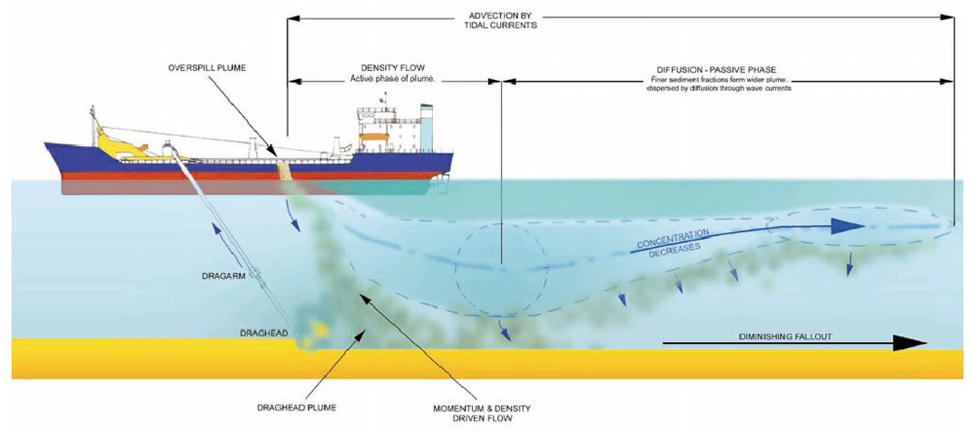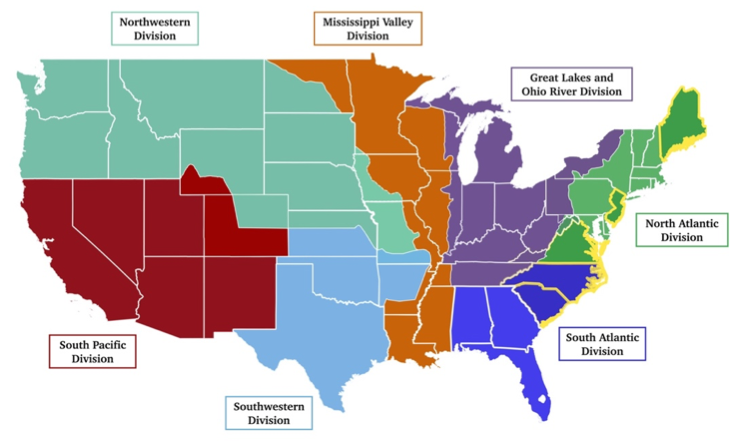Chelsea Brown is a Marine Lab Technician with the UNC Institute of Marine Sciences in Morehead City. Chelsea is an honors graduate from UNC-Chapel Hill’s Environment, Ecology and Energy Program.
Beach building
I have lived in North Carolina and been near the coast my entire life, but I’ve never given much thought to dredging. I imagine that’s true for most people, but that may be changing.
This past February, during the off-season, beach goers saw large pipelines lining the beaches of Fort Macon and dredge hoppers just offshore. These pipelines were transporting dredged materials, sediment extracted from the channel, onto the shore as part of a beach restoration strategy: beneficial reuse.

Gully washers
Two years ago, the North Carolina coast experienced hurricanes Florence and Michael and suffered large amounts of erosion and other damages from the hovering storms. Storms of such magnitude threaten our coastlines and are only predicted to become more frequent, but beneficial reuse gives a greater purpose to dredged sediments that are traditionally disposed of at an upland facility or in the open ocean. It’s like upcycling for marine sediments.
Although beneficial reuse is a relatively new strategy, dredging is a longstanding practice for maintaining the navigability of waterways for recreational, biological and economical productivity, but it is not without costs. Dredging disturbs benthic habitats and sediments which can negatively impact water quality and create sediment plumes that can smother wildlife. State legislation and permitting are the main tools for states to systematically reduce the potential and severity of dredging impacts through agency-reviewed permitting, designating protected resource areas, and restricting certain water uses.
Here and yonder
Each coastal state faces unique challenges which are reflected in their policy approaches, but the shared goal of balancing economic and environmental interest, as well as the changing climate lend value and opportunity to cross-evaluating the approaches of other states. This recent strategy, and others like it, can help us combat coastal erosion and create more resilient coastlines and could bring North Carolina’s coastal management practices to the forefront of strategic beneficial reuse of dredged material.
With the advent of the practice of beneficial reuse we were interested in whether NC’s present dredging policies are conducive to “sediment upcycling” and ensuring environmentally conscious practices.
With the advent of the practice of beneficial reuse, we were interested in whether NC’s present dredging policies are conducive to “sediment upcycling” and ensuring environmentally conscious practices. We also wanted to know how NC’s policies could be improved by evaluating and comparing them with the policies and practices of other coastal states.
A pandemic project
I started this project in the earlier months of the pandemic and was grateful to have remote work to keep me busy. Prior to this project, I didn’t have much experience with policy or dredge operations- by that I mean next to nothing. Hundreds of pieces of dredging legislation later, I can say there is still a lot to learn.
I started by evaluating dredging laws across two coastal divisions and five states: NC, SC, ME, NJ, VA (outlined in yellow), and separating the policies into 20 subcategories that encompass the entirety of the dredging process, from pre-permitting to post-project completion. We decided to include all laws targeting dredging, beneficial reuse, and affiliated environmental protections in coastal areas that are partially, tidally or entirely covered with water to address variations in key policy areas from one state to the next.

For the next phase of the project, we formulated a nine-question interview for relevant state agency leaders in order to address the strengths and weaknesses of state policy that are experienced when policy is put into practice.
Cutting from similar cloth
There is remarkable consistency in the types of policies that states have in place regarding dredging. Across five states and 20 policy categories in a 100-cell matrix, only ten matrix cells were empty (red dots), indicating no existing policies for that category.

There is 90% consistency in the types of policies that states are enacting, but there is considerable flexibility in implementation; many of the policies are explicitly context-dependent and require case-by-case evaluations. This led us to question what other factors may be affecting differences in state’s approaches to dredging practices.
It’s in the pudding
We spoke to the people who are most familiar with their state’s dredging policies and they had some interesting things to say. The interview responses reiterate that the presence of policy does not always determine dredging management efficacy, rather policy implementation is the primary variable. For example, a state may have a policy that requires mitigation for damage to submerged aquatic vegetation (SAV) subsequent to dredging operations. Although vegetation may be replanted, the long-term success of the mitigation effort is not monitored and its failure is not enforced. Scenarios such as this can undermine well-intended policy and leave our ecosystems more vulnerable.
Taking a page from their book
Despite the consistencies, North Carolina’s dredging policy could take a page from the law books of other states. Specifically, NC could enact project pre-assessments and post-project monitoring, like in Maine and New Jersey, to preempt problems and maximize dredging benefits. Other states have guidance for assessing potential applications of dredged material during the initial dredge project approvals, but NC has not yet developed such guidelines.
Balancing the environmental and economic implications of dredging is a big part of effective projects and productive waterways. Despite this, most coastal states do not use- and often don’t even have- robust economic data to make cost-benefit dredging decisions. North Carolina lacks comprehensive natural resource evaluations for its coast which would serve as a benchmark, allowing economic consideration to be weighed against potential damages to vital habitat areas. In fact, New Jersey is the only state analyzed in this study with comprehensive economic data to represent the dollar value of its natural systems. By monetizing the importance of the NC coast, the state can make informed decisions that more adequately address and consider the significance of our coastal resources.
Utilizing dredged material to enhance the resilience of both the natural and built systems is well understood, but there are opportunities to enhance this proactive effort and provide numerous benefits to the coastal region. Namely, there are significant opportunities to strengthen and elevate dredging practices in North Carolina through policy implementation and modification of dredging project planning to include explicit use of dredged materials to enhance coastal resilience.
See you at the beach
Although I hope I no others go to the beach and ponder dredging practices, I do hope that dredging and climate-related environmental issues are made known to the public and that these opportunities for policy improvement are made a reality for our state. As storm intensity and frequency continue to strengthen and change, beneficial reuse is yet another potential avenue for ensuring the longevity of North Carolina’s coastline and an opportunity for our state to be at the forefront of advancement in dredging policy.
The research described above was part of a larger coastal and fisheries research project supported by the North Carolina Marine and Estuary Foundation and the North Carolina Policy Collaboratory. More information about that project can be found here: https://www.thinkcoastal.com/research/coastal-studies/


